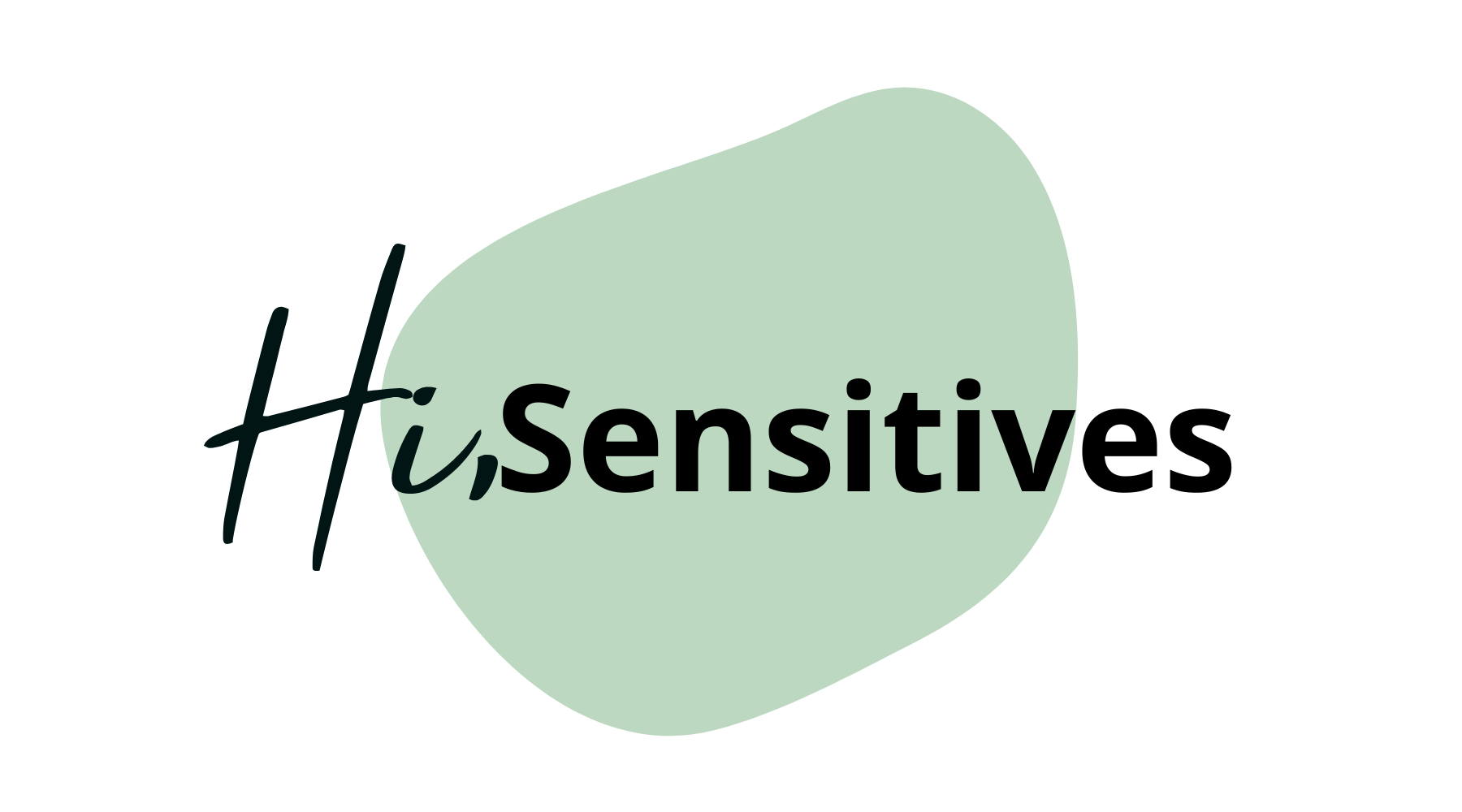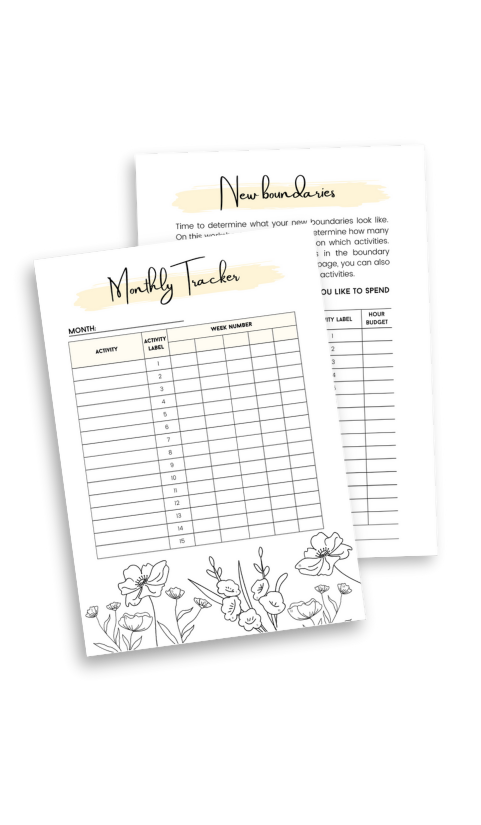Researching your own thoughts. It sounds a bit meta, but it can really help highly sensitive people! In this blog autism coach Nikki shares a method to help you conquer your inner critic thoughts with support from ‘The Work’.
Estimated reading time: 10 minutes
A little while back I was watching a vlog on YouTube. Just a regular, daily vlog that shows somebody’s life.
After a while, that somebody started talking about negative thoughts and I felt intrigued, because I too experience negative thoughts. I’m a highly sensitive overthinker and I believe I am not alone in that. So when the vlogger started to talk about ‘The Work’ and the inner critic, I was curious. And now I’ve researched the topic, I wanted to share it with you too!
Here’s What You’ll Discover:
What Is An Inner Critic?
Everybody I know has one: an inner critic. The inner critic could be described like a little external voice inside your head. However, it isn’t. That inner critic is nobody but ourselves. And most of the times, that inner critic can be quite useful for us in our daily lives. For instance, it can help you thrive in life, because it keeps you focused. It keeps your head in the game. Which can be so helpful when you’re at work, for instance.
However, that inner critic can sometimes go haywire. And when that happens, it can behave cruel and mean towards us. As I said, it feels like that inner critic is a little voice, but it really is our own mind talking to ourselves.
Consequently, with everything we do, it critiques us: ‘You can’t do that, you lack the skill’. Or ‘don’t bother that friend, they think you are annoying’. Moreover, it can cause something called imposter syndrome or it may even ignite social anxiety. The inner critic wants perfectionism, when in fact, perfectionism does not even exist.
As a result, you can end up getting caught up in a net of negative thoughts. And when you are caught, it’s hard to get out of it. Your brain rewires itself in a way that it will start to believe itself. Therefore, the thoughts you create, become you. You’ll start to believe them, and when that happens, you’ll act on them.
This pattern of negativity will follow you around for the rest of your life. You’ll believe that the friend doesn’t want you around, so you’ll stop reaching out. And they’ll stop reaching out to you. It’s a self-fulfilling prophecy.
Does this sound familiar? Then you might want to discover The Work from Byron Katie to tackle your inner critic.
Byron Katie
Byron Katie is the founder of The Work. In her thirties, she was severely depressed. She went through a period of depression, anger about basically everyone and everything and she had suicidal thoughts. This period lasted almost ten years.
However she had a revelation: it was not the world around her that caused her to suffer from this, but it was in fact her own beliefs about it. She noticed a change when she started to disbelieve her thoughts and her inner critic. Consequently, this was the starting point for creating The Work.
“It’s not what happens in life that bothers us. It’s what we’re believing about it that bothers us”
Byron Katie
Byron started to rethink her thoughts about the world, instead of wanting to change the world itself. She chose to see and experience life, and reality, as it was. As a result, her inner critic could talk all it wanted, she was the one in charge of believing what it said. All thanks to The Work.
Consequently, when she did that, she noticed the beauty of the world. She got in touch with her own being. It gave her an unimaginable freedom and joy that never disappeared.
The Work – A Powerful Way To Tackle Your Inner Critic
It’s important to remember that we can’t change our thoughts. Nor can we stop them from popping up. It’s normal. As I said, we all experience thoughts, positive and negative. It’s a part of human life. Maybe even more so for highly sensitive people, who are usually very aware of their thoughts. However, with Byron Katie’s The Work, we acknowledge that they are in fact there.
With The Work it is possible to explore this inner critic. We look at our negative self-talk, what it is that is limiting us, what is causing us to feel stressed or what throws us off our balance. Consequently, The Work illuminates these negative thoughts so we can examine them. It’s a way of letting these thoughts come to the surface, all the way into consciousness. You can find out what is the truth for you: is this a thought, or is it something else?
The Work uses four questions, which will allow you to explore all these critiques and negative thought patterns. Moreover, you may find out that it is not the situation that causes you to feel bad, in pain, stressed or angry. It is not other people that are giving you those feelings. It is you. It’s the thoughts you’re having about that particular situation.
Using The Work
If you consider to use The Work to tackle your inner critic, but don’t know what to expect, here’s an overview:
Putting Your Thoughts Onto Paper
The very first step of The Work is putting your inner critic thoughts onto paper: you formulate the thoughts on which you will later work on. Think of this step as creating a “starting sentence.” For this, you think about a stressful situation (and not the thought yet). Then, mentally return to the time and place of this stressful incident and give an answer to the following questions:
- Now that you are in this situation, time and location:
- Who makes you angry, confused or disappointed and why?
- How do you want this person to change? What do you want this person to do?
- Which advice would you give this person?
- What do you want the other person to think, say, feel or do so that you are happy?
- What do you think of this person in this situation? Make a list of everything you think about this person.
- What exactly of this situation do you never want to experience again?
After doing this exercise from ‘The Work’, you have put some of your inner critic thoughts into short sentences on paper. Now you are ready to start exploring these thoughts one by one with the four questions. Therefore, take a thought and run it through your head. Consequently, keep repeating the relevant thought. Repeat the unwanted thought, obstacle, or judgment that you put in a starting sentence beforehand. I’ll show you an example:
“Ellen doesn’t want me as her friend”.
If you are ready and formulated your sentence, go ahead with the four questions!

The Four Questions
The Work is a meditation practice. Now that you’ve found your one thought and put it in a sentence form, you can start working on your inner critic through The Work. Contemplate each question, one by one and one at a time. Consequently, write them down, think about them. Take your time for this process.
1. Is this true?
What is real about this? What is the truth? What’s actually happening? If this feels true for you, you can answer yes. If it doesn’t feel true, you can answer no.
“Yes, this feels true for me. Ellen does not want me as a friend”.
2. Can you absolutely know that it is true?
Can you absolutely know that it is true? If you still think it is true, it means that you are attached to the thought. Do know that I’m not trying to change your mind, this question is for research!
“No, I don’t know if it is absolutely true. I have not asked Ellen”.
3. How do you react / what happens when you think that thought?
How is this thought controlling your behavior? Towards yourself and others? How do you treat yourself? How do you treat others when you think this thought? What are you doing? Be specific! How do you live when you believe that thought as if it were true? What images come to mind with that thought? What do you get when you live / think that thought? How does that feel inside? Where do you feel that? Where does it come in? Close your eyes, it hits you there, how far does the feeling travel further into your body? Everywhere, because it takes over you.
“This thought makes me feel alone, sad and insecure about myself. I notice myself getting out less often. Also, I don’t contact Ellen because I’m afraid of rejection. I will lose Ellen as a friend because I don’t reach out anymore. My social anxiety gets worse because of this thought. If Ellen doesn’t want me as her friend, other people might not like me either”.
4. Who would you be without that thought?
Who would you be if you had never heard that thought? How would you feel?
“Without this thought I’d reach out to Ellen. I am much better off because we’d accept each other for who we are and we’d have fun together. I would not feel insecure about myself, I’d be happier and I would not be scared of rejection”.
Turn It Around
After the 4 questions you are going to turn the thought to yourself, then to the other and then to the opposite. Consequently, these reversals will give you the opportunity to experience other aspects of reality:
So, if you reverse the thought to yourself, you could say:
“I don’t like myself”.
To reverse the thought to the other, you could say:
“I don’t want Ellen to be my friend”.
To reverse the thought to the opposite, you could say:
“Ellen does want me as her friend”.
Ask yourself, how are these sentences true? After every reverse sentence you have written down, you also should ask yourself: is it as true or more true than the original? Miraculously, the answer will always be yes. Is it not a yes just yet? Then it could be the case that you are still attached to that thought.
Why The Work Is Great For Highly Sensitive People Dealing With A Strong Inner Critic
As a highly sensitive person, you might notice your inner critic taking over. However, know that is very common and okay to experience it this way. Nevertheless, as a highly sensitive person, you are susceptible to overstimulation. Most people will think that overstimulation will only come from external stimuli, like bright lights, hard sounds and noises and/or itchy fabrics. However, that is not always the case!
Overstimulation can also be caused by your own thoughts, made up by your inner critic. And because of that, it is helpful to be aware of this inner critic and thought patterns through The Work. Consequently, when you control your inner critic, you leave more room for positive thoughts, kindness, energy and connection.
The Work will help you feel more satisfied with your life. As a result, negative thoughts won’t control your life anymore. You will notice them, you will examine them and you will put them to rest and walk away with much happier thoughts.
Have Fun Discovering The Work
Please know that this is a very, very short version of working with your inner critic through The Work. This shows how extensive and powerful this method is! Therefore, if you want to know more about this subject, you could find more on thework.com.
You can find all the information you need, you can find worksheets to do The Work, but you can also look up some certified The Work practitioners for when you want some extra guidance.
Also, you may find these books very helpful while tackling your inner critic:
A Mind at Home with Itself – Byron Katie and Stephen Mitchell
Loving What Is – Byron Katie and Stephen Mitchell
A Thousand Names For Joy – Byron Katie and Stephen Mitchell
I Need Your Love, Is That True? – Byron Katie and Michael Katz






